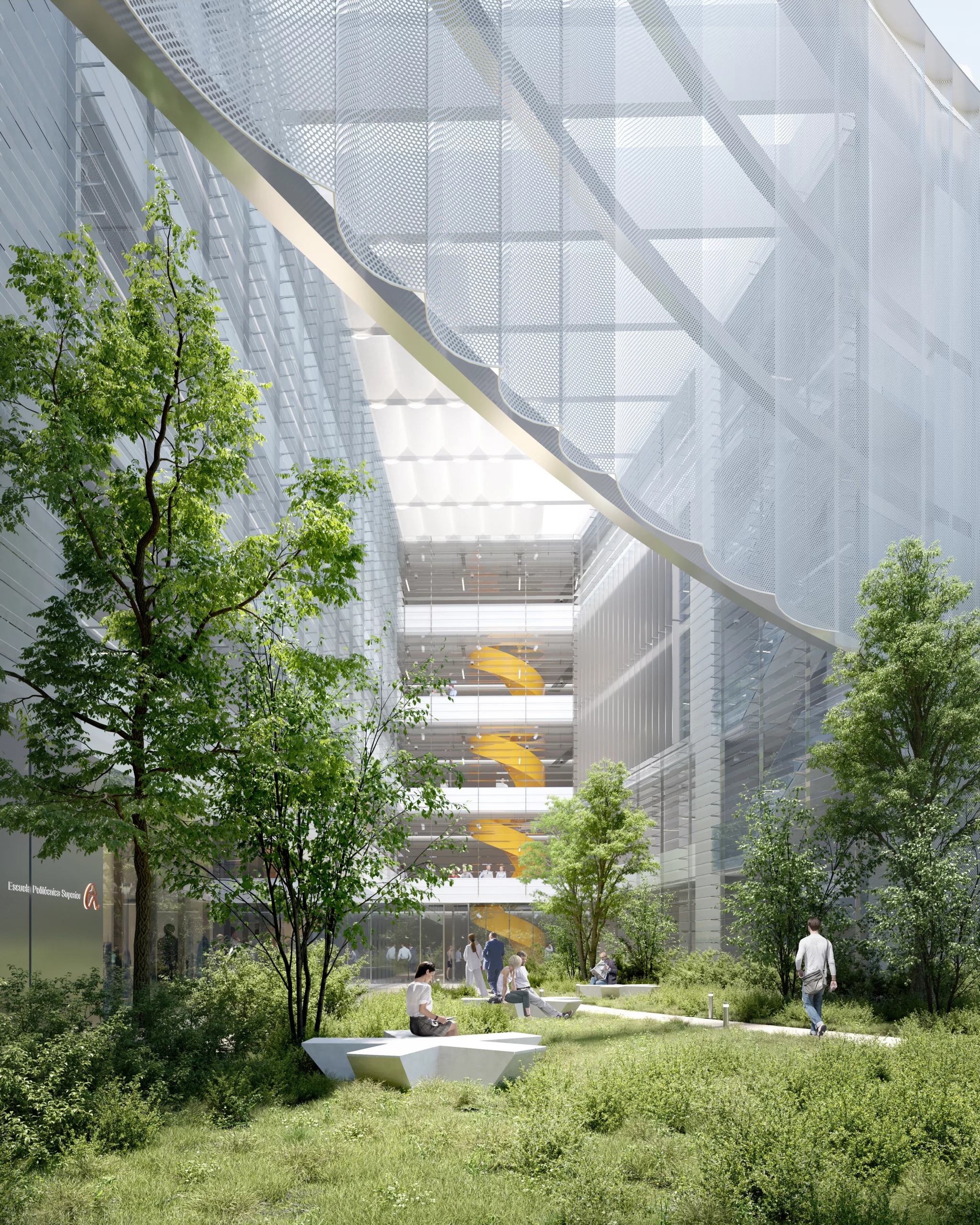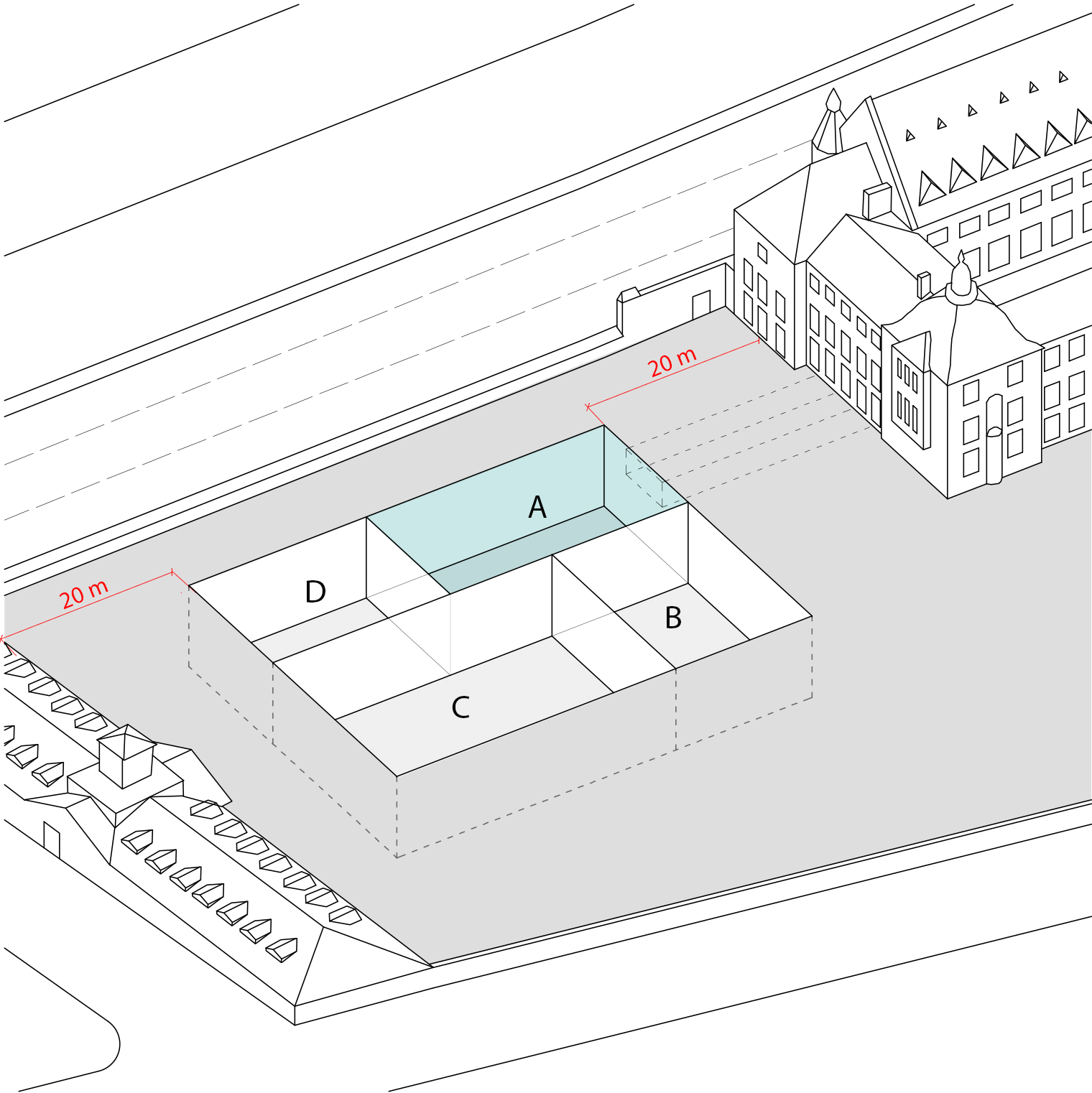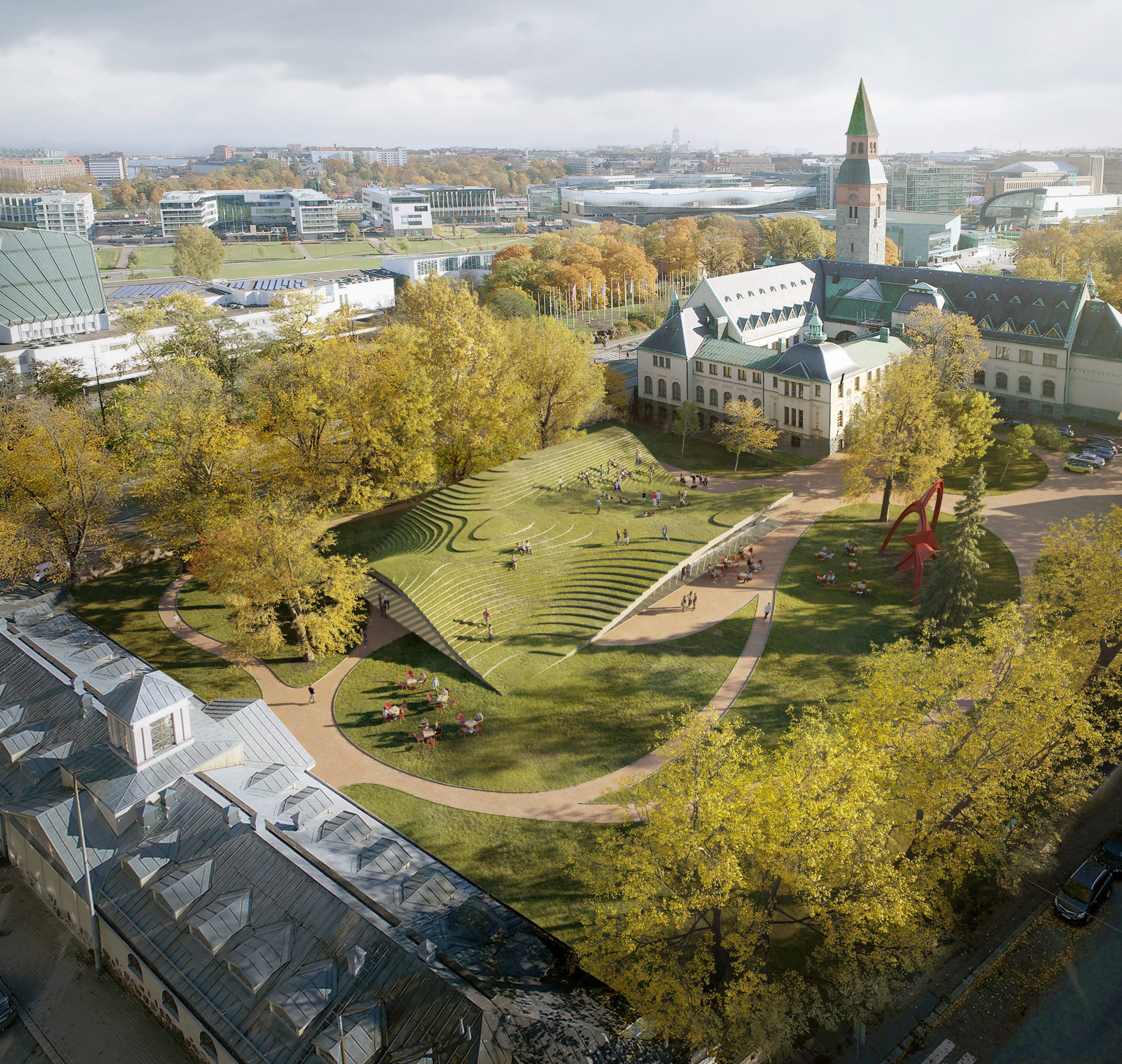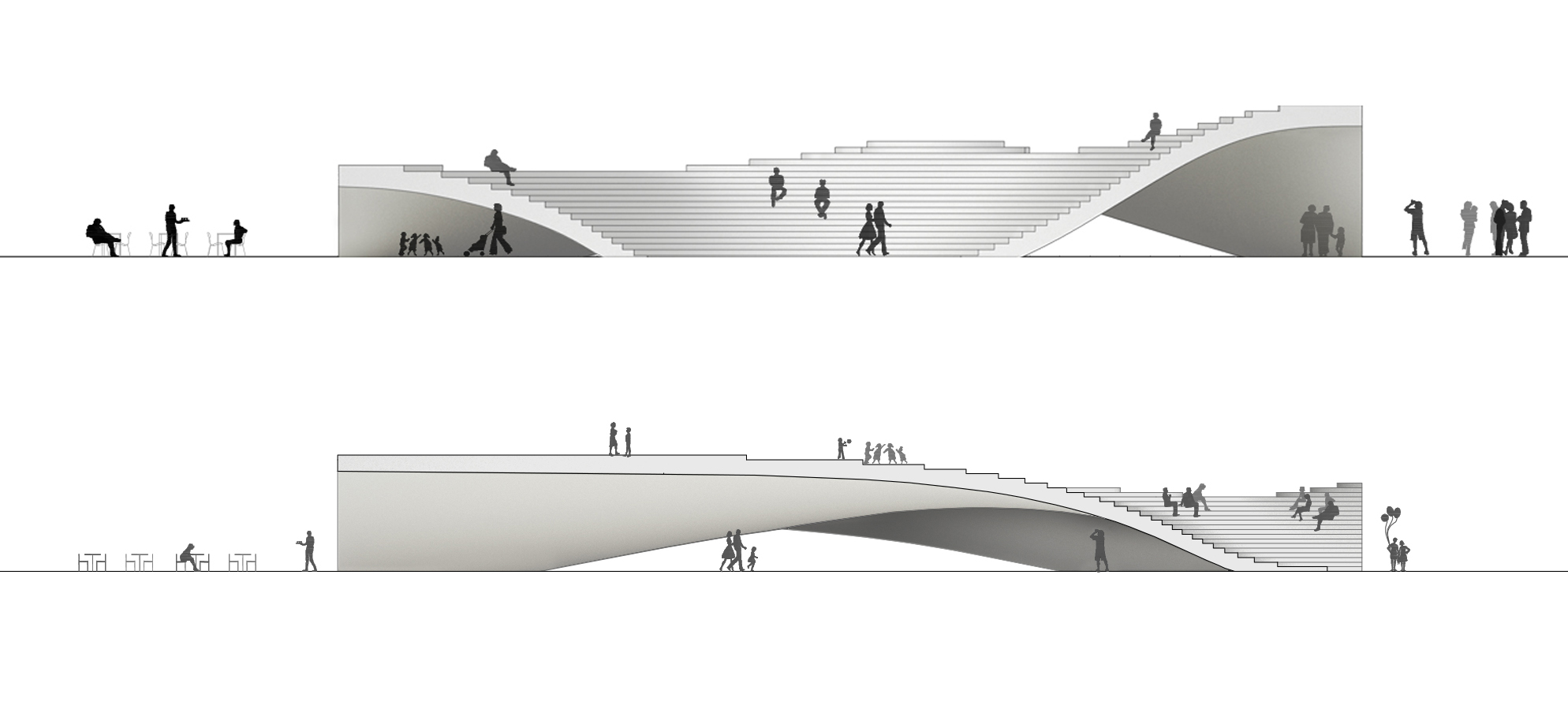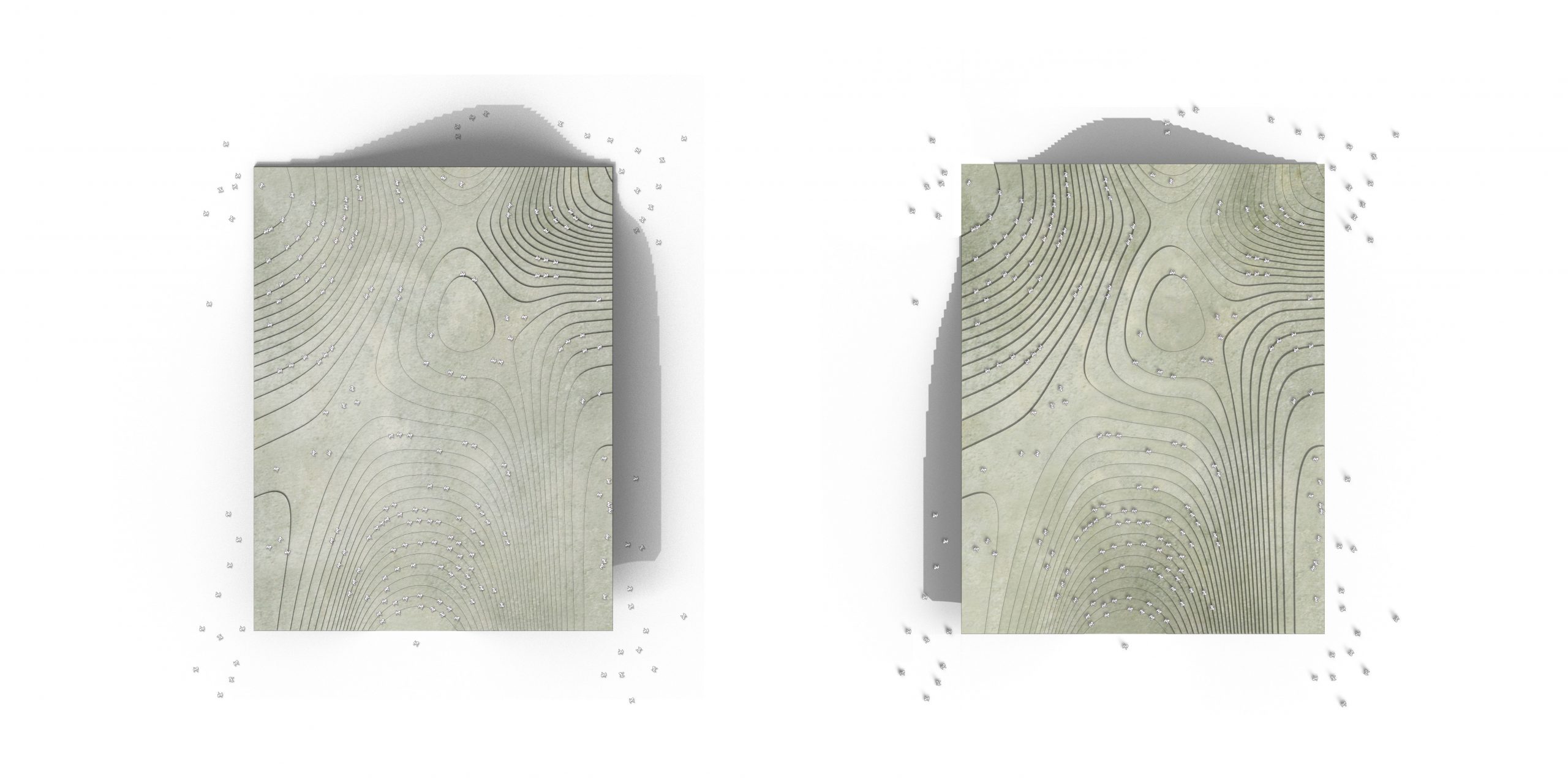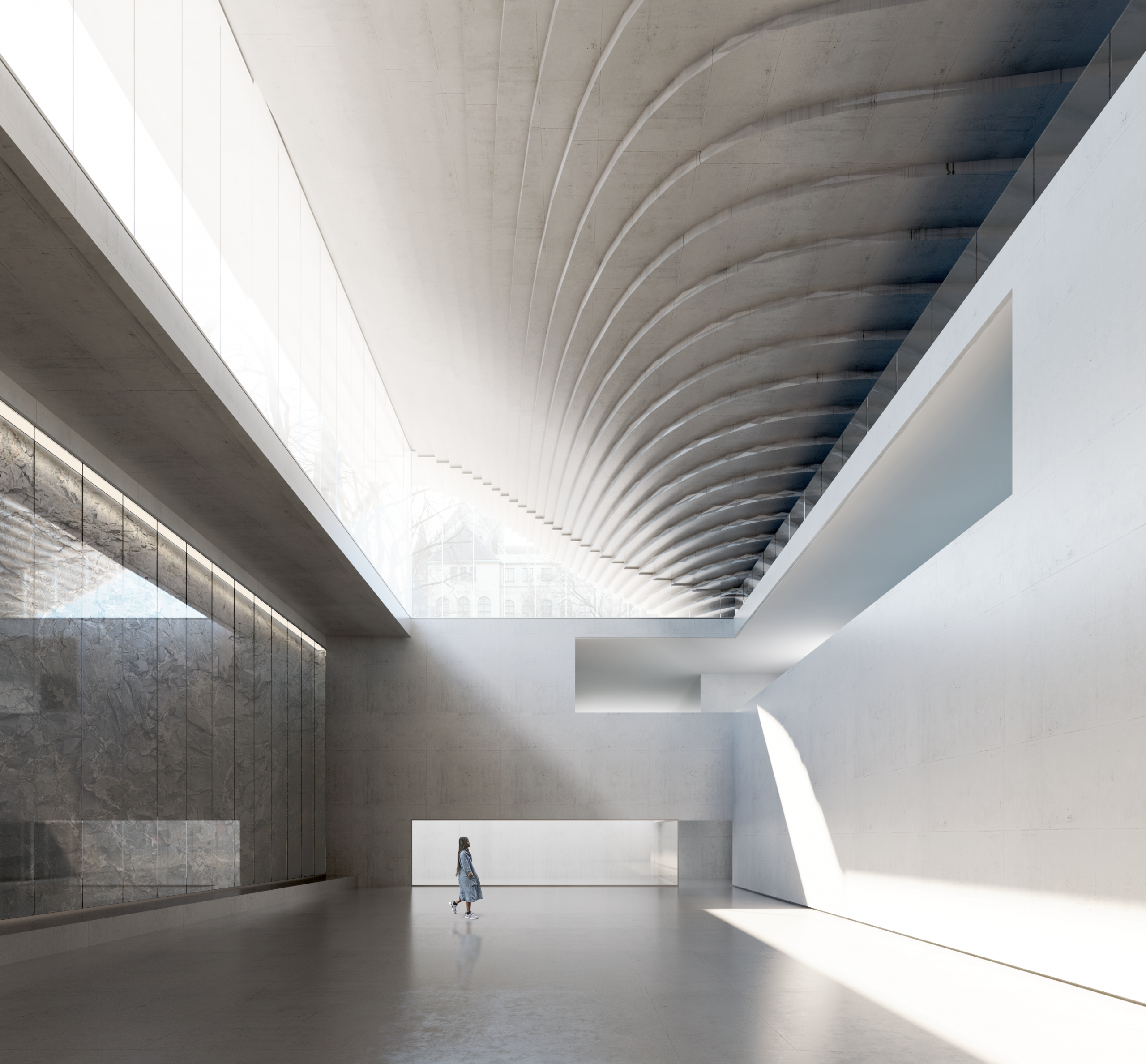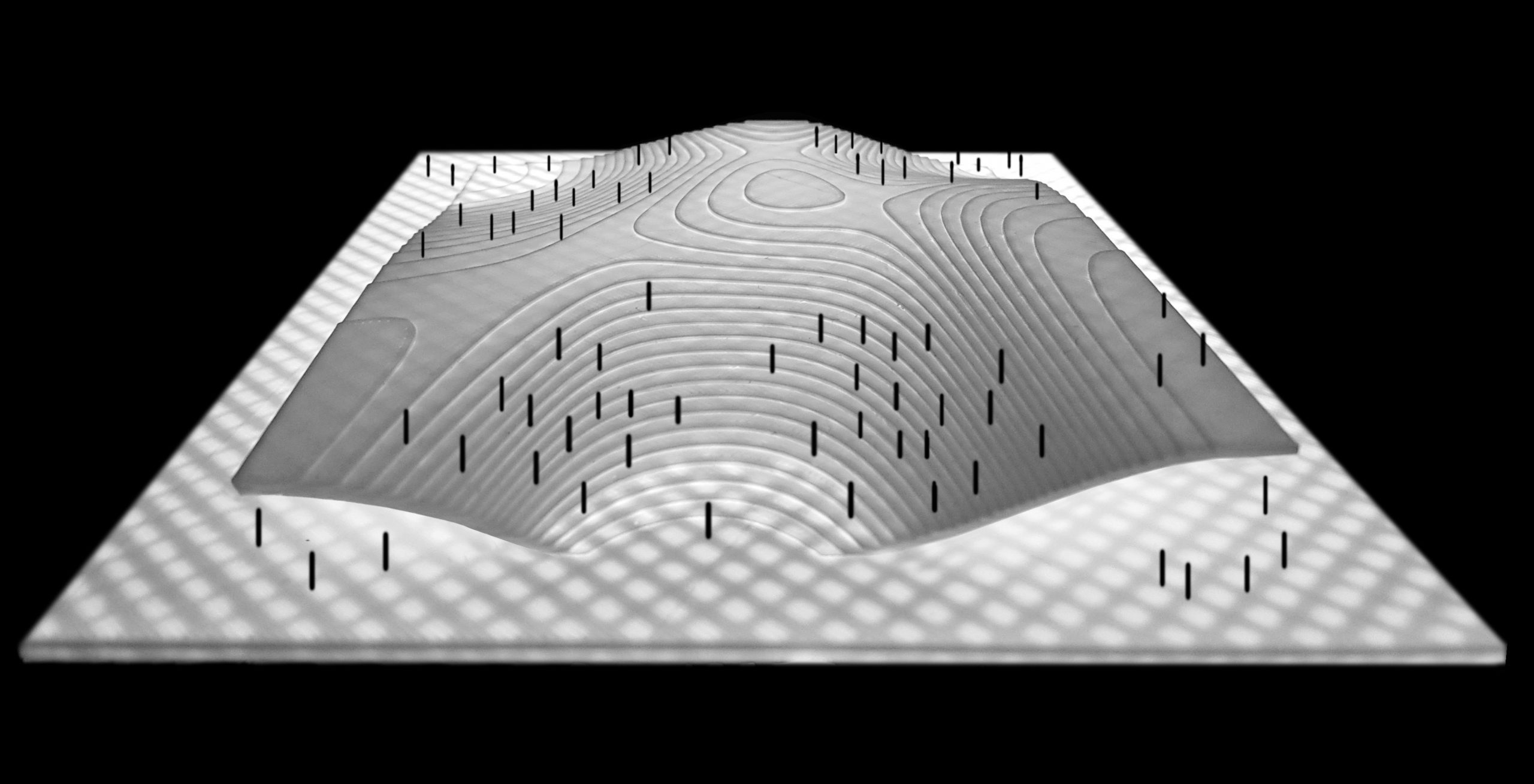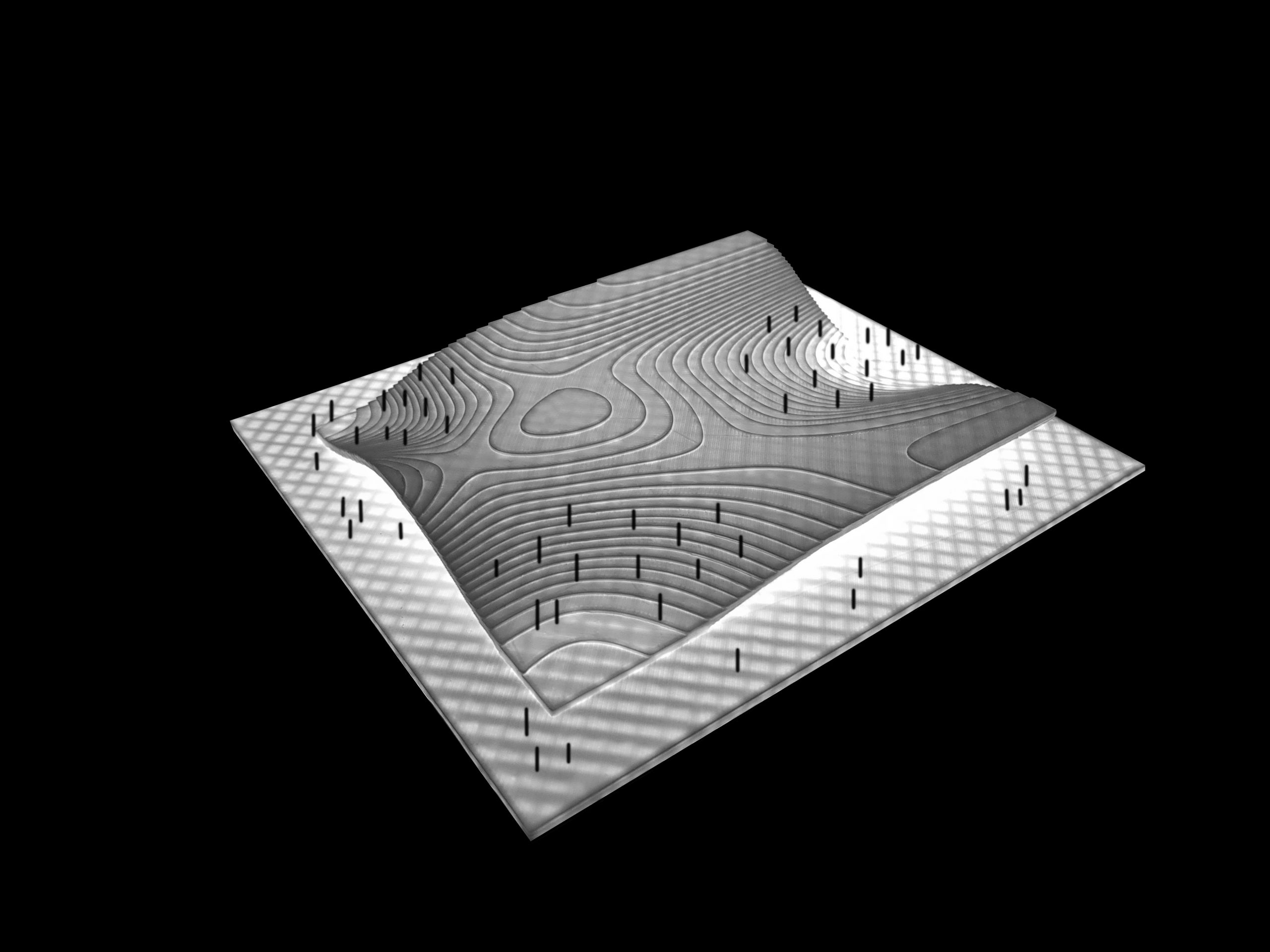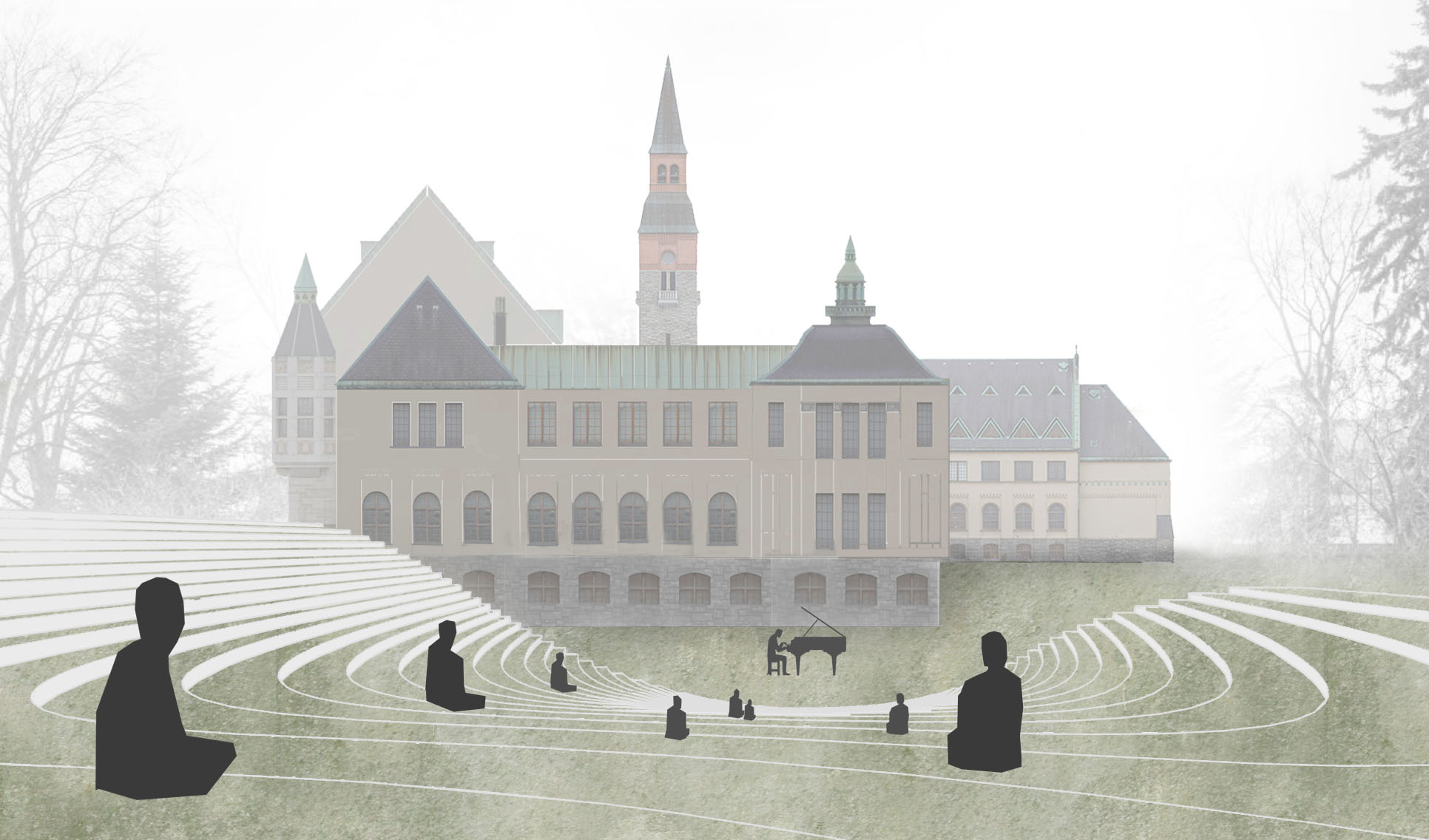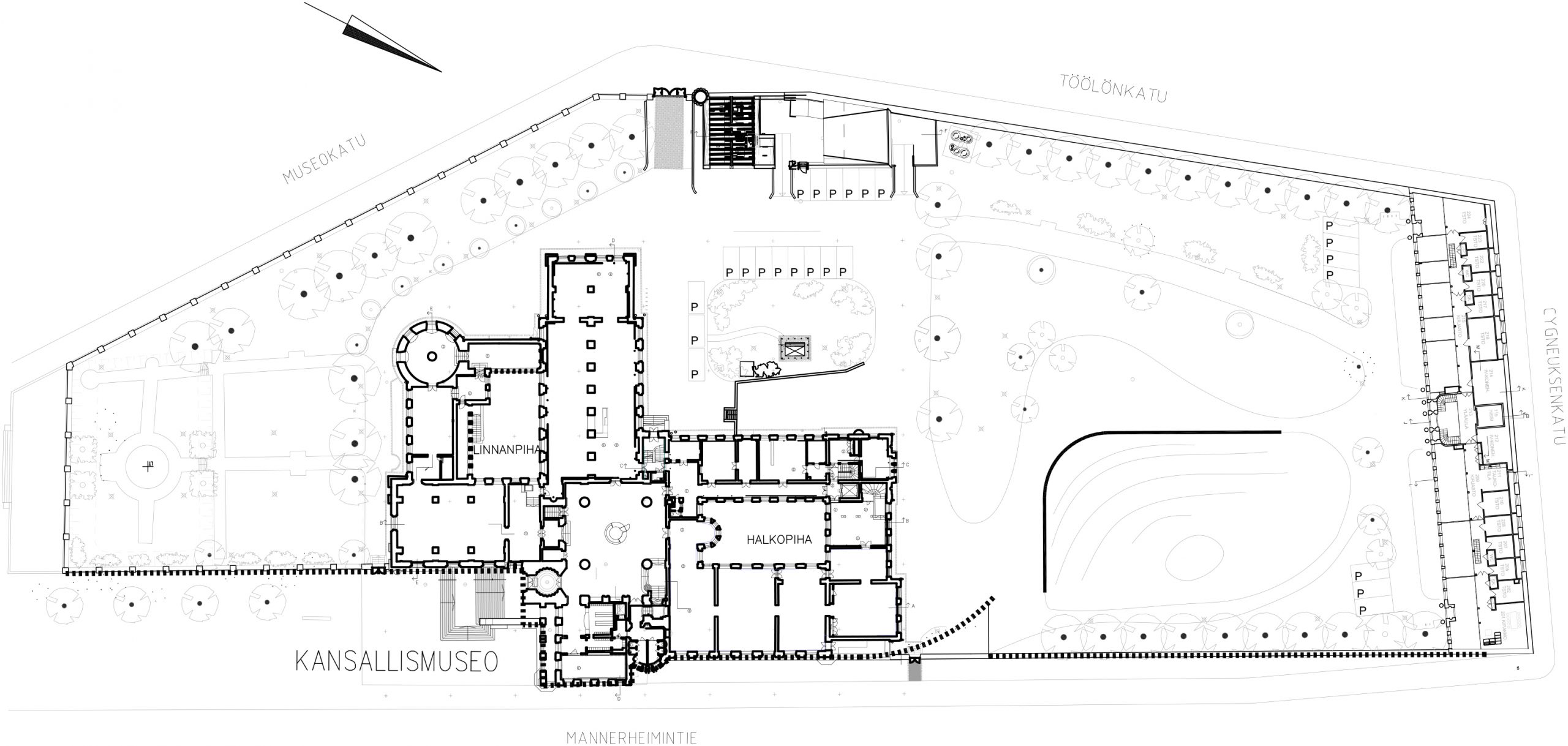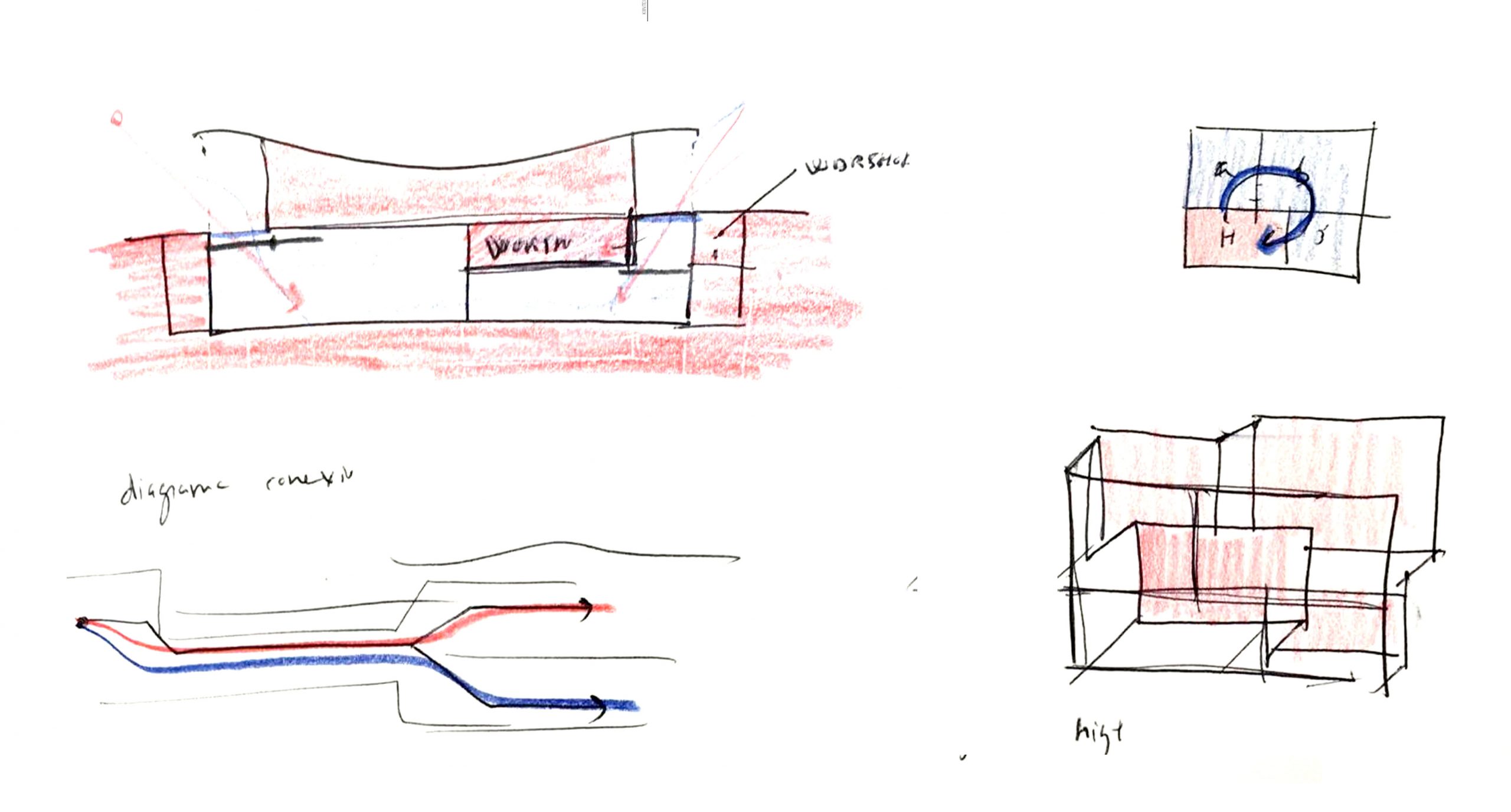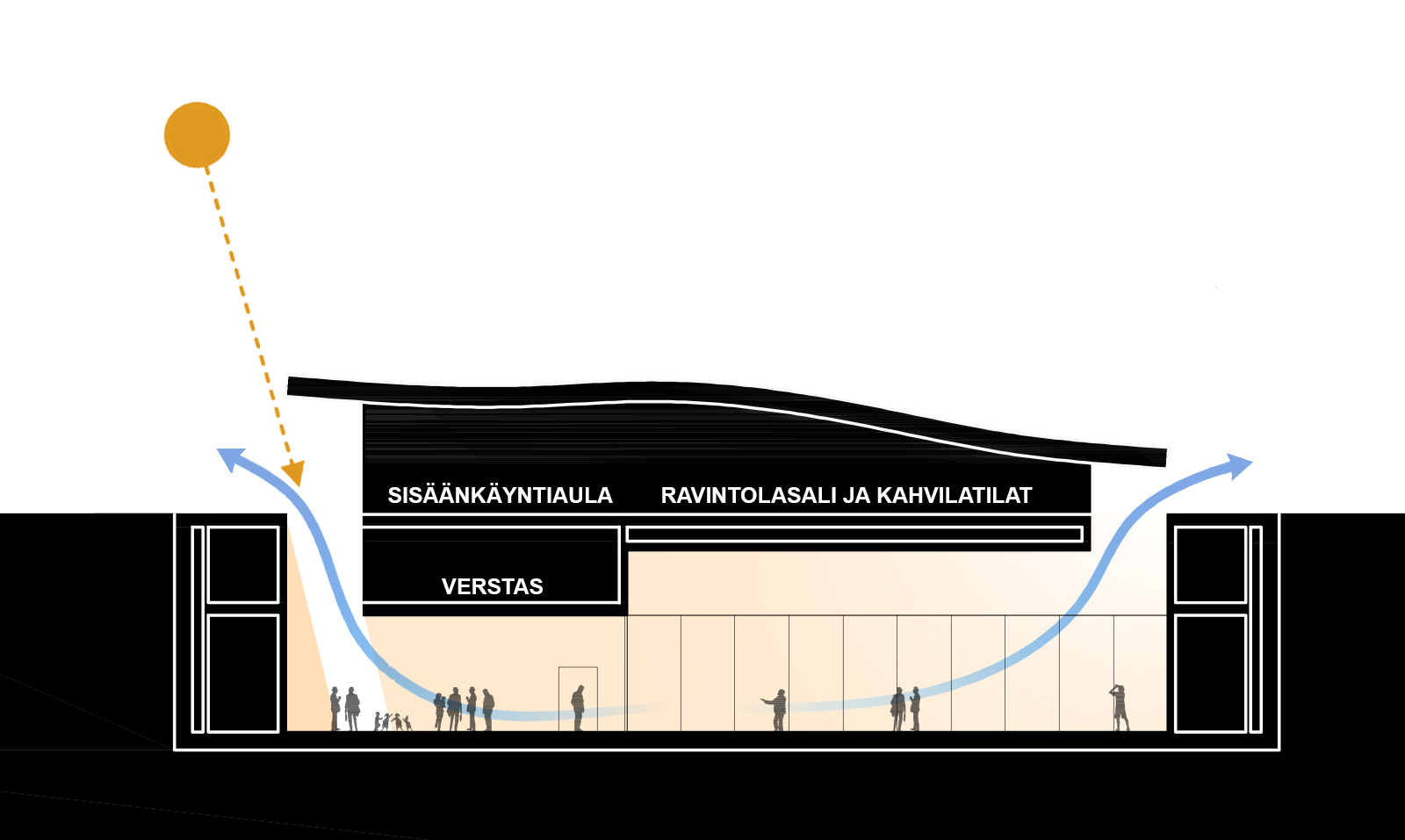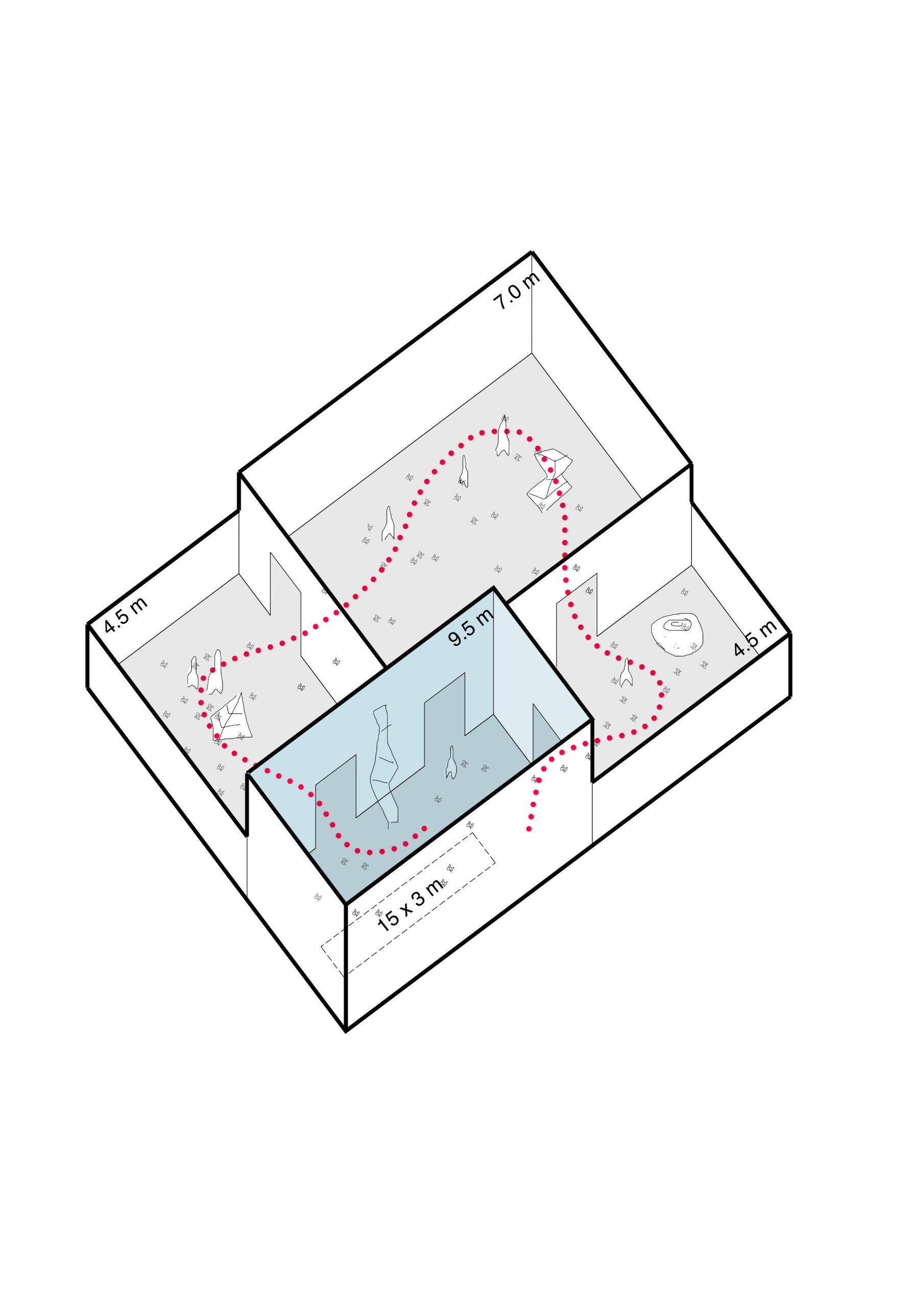The proposal for the extension of the national museum is based on the initial idea of turning the new building into a new garden area. An object that behaves as an extension of the public space and under which the entrances to the new annexe and the restaurant are located.
The national museum complex forms a complex of gardens and buildings in which the turn-of-the-century building that is the current home of the national museum clearly stands out. The new extension of the museum is proposed in the north garden of the complex.
The proposal is positioned midway between the castle and the administrative building to the north of the plot boundary. Its specific position and its high compactness allow the project to be developed in the minimum underground area and with the least possible impact on the existing group of trees.
The project is mainly divided into two parts. On the one hand, the underground part that serves the main programme of the expansion; the new exhibition halls, workshops, technical services, security and maintenance. On the other hand, the emergent part of the building that houses the entrances to the restaurant and the extension of the national museum.
The underground part, as we have said, is as compact as possible and is divided into two levels. An intermediate level between the garden level and the level of the exhibition rooms where we find workshops and auxiliary services, and a main level seven metres below the garden level, which has a large hall giving access to the three large exhibition rooms. These rooms are interconnected in such a way that they can function separately or be joined into a single large space together with the hall. On this level are also all the ancillary services of toilets and museum shops. There is a perimeter service corridor around all the exhibition rooms in direct connection with the freight elevator and with the maintenance and storage areas.
While the underground part of the programme is intended to be compact and multifunctional, the emergent part of the building is intended to generate as much integration as possible of the building into the castle garden.
We understand that in the future the garden should be another space where to exhibit and carry out activities related to the museum. That is why the building is designed as an artefact in continuity with the garden and, thanks to its shape, offers new cultural and exhibition possibilities. The building is presented as a green roof that folds up, connecting with the garden and generating accesses to the underground annexe and the restaurant and, thanks to its shape, allowing the appearance of steps and access areas to the roof. This topographical surface is part of the garden and is a point from which the castle and the rest of the museum complex can be viewed. Its topography is also shaped to create a large open-air amphitheatre with the castle as a backdrop, which will be an ideal venue for exhibition events, concerts and performances.
The new extension can be accessed from the outside or from the existing museum. Access from the museum is through the north courtyard, which will be renovated and covered with a steel and glass structure. From this courtyard we access the stairs or lifts that connect to the intermediate level of the annexe which is accessed through a large corridor. Once we have crossed it, we can go down one more level and access the exhibition rooms or go up one level and access the restaurant or the garden. In this way, excavation under the castle is minimal and the impact on the functioning of the actual museum is almost nil.
As the annexe and restaurant can function independently of the existing museum, we created a direct access to the annexe from Mannerheimintie Avenue through an opening in the existing wall. This access will be open when the opening hours of the restaurant or annexe require it.
COMPACT SIZE
We grouped the three event rooms and the hall as four empty boxes in the most compact rectangle possible. This 44×34 m volume is separated from the neighbouring buildings by 20 m, so there are no excavation problems with the existing foundations. The position and size of the hall avoids useless corridors and generates a space that can be used as the fourth exhibition hall. Finally, this compactness allows you to cut down as few trees as possible.
A UNIQUE ROOF
We propose that there is a strong relationship between what happens underground with what emerges from it. Therefore, we make a cut in the field right at the perimeter of the 4 rooms and raise it generating two things; on the one hand, a single low platform to never compete with the existing building and to introduce natural light into the exhibition rooms. In this way, the architecture and the skylights are included within an integral solution.
ARCHITECTURE AS LANDSCAPE
This unique roof folds in contact with the ground to generate a new landscape. These folds give continuity to the garden and generate three grandstands oriented to different places: one to the actual museum, one to the Alvar Aalto hall and the last one to the garden. This new topography creates a podium and a stage for sculptures, concerts and cultural events.
PROGRAMME AND ACCESS
The new entrance hall is located at the closest point to the existing building and Mannerheim Street. Therefore, from inside the new hall there will be direct views of the existing building. We created a new door for the garden and the annex as close as possible to the existing entrance to the museum to avoid confusion and both are visible at the same time. On the other hand, the restaurant is oriented to the southwest and open to the garden on two sides, thus making use of the entire garden as open-air terraces. There is an internal connection between the lounge and the restaurant.
MATERIALITY
We propose that the roof be part of the garden as a new landscape and, therefore, we generate a material continuity between the two. The roof touches the garden on one side in a green area and on the other side in a stony area, so we propose a topography with a gradient between the two materials where the natural and the artificial come together: Architecture VS Nature.
MOVEMENT OF PEOPLE
We have carefully analysed the relationship between the existing building and the new annex and therefore proposed the most convenient and rational connection. This connection takes place at an intermediate access point as a balcony that looks over the empty space of the hall and allows you to quickly walk up to the restaurant/garden or directly down to the exhibition hall. This allows that from the Courtyard of the existing building we only have to go down one floor, which already exists and extend to the annexe, saving unnecessary stairs and routes.
LIGHT AND NATURAL VENTILATION
Thanks to the strategy of cutting just inside the perimeter of the rooms we obtain skylights of 3 m. wide. This void generates an important entrance of natural light and also allows to ventilate the event rooms in a natural way. In addition, thanks to these solutions and the design of the uses, the workshops and service areas also have natural light and ventilation. These skylights have a very simple closure system in the false ceilings of the rooms.
MULTIFUNCTIONAL BOXES / PIECE 15x3m.
Thanks to the design of the event rooms and lounge, a multitude of usage variables can be generated, linking the rooms in pairs or in threes or threes together. This arrangement also allows for a very convenient visit, creating an optimal travel cycle. The heights of these boxes are various and this allows each of them to take on different events. The hall is 9.5m high, the 600m hall is 7m high and the other two halls are 4.5m high. Thanks to the size and design of the hall, it is possible to fit the required 15×3 m piece through the void that connects the garden with the event rooms through the hall without any problems.
